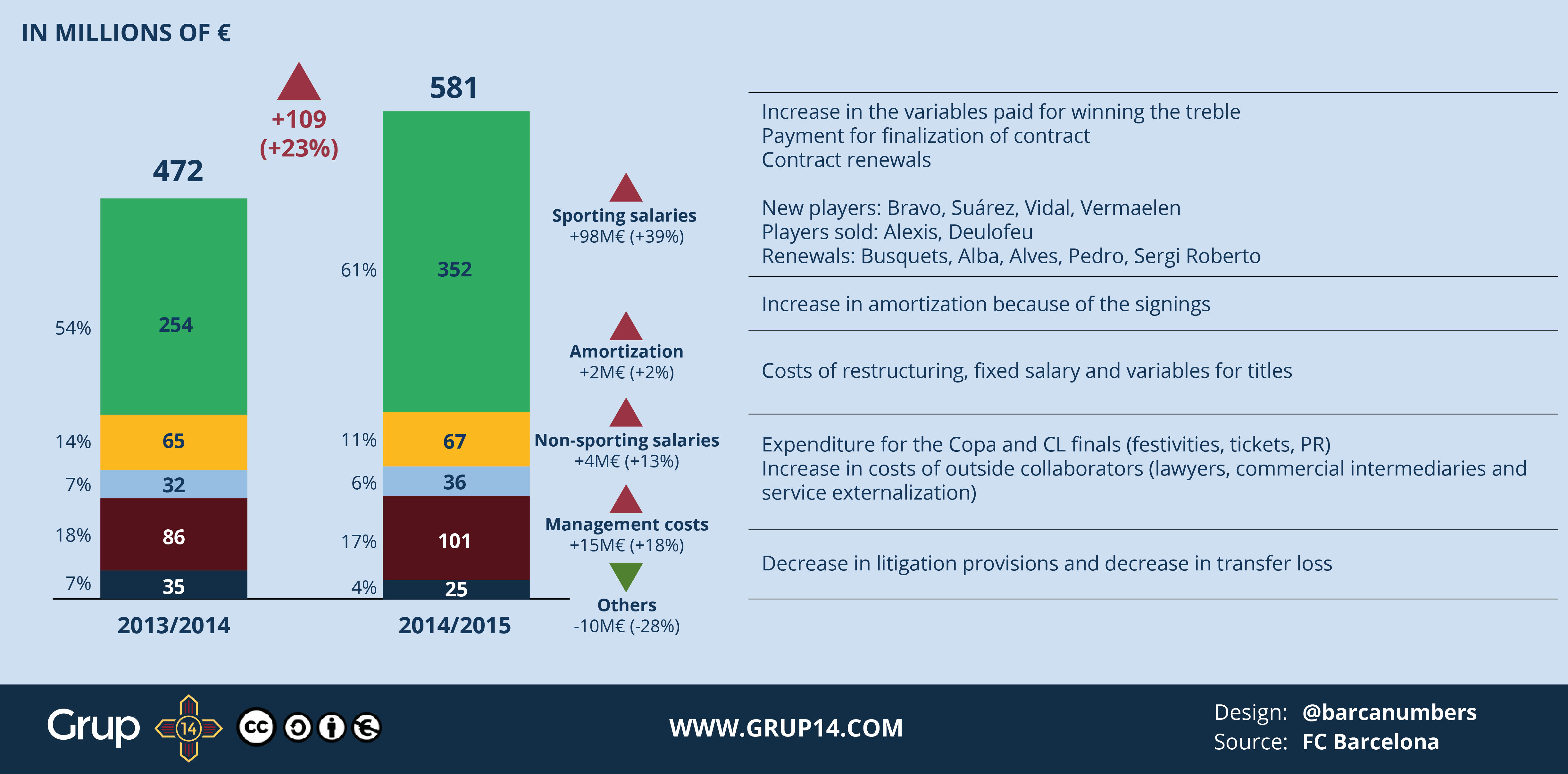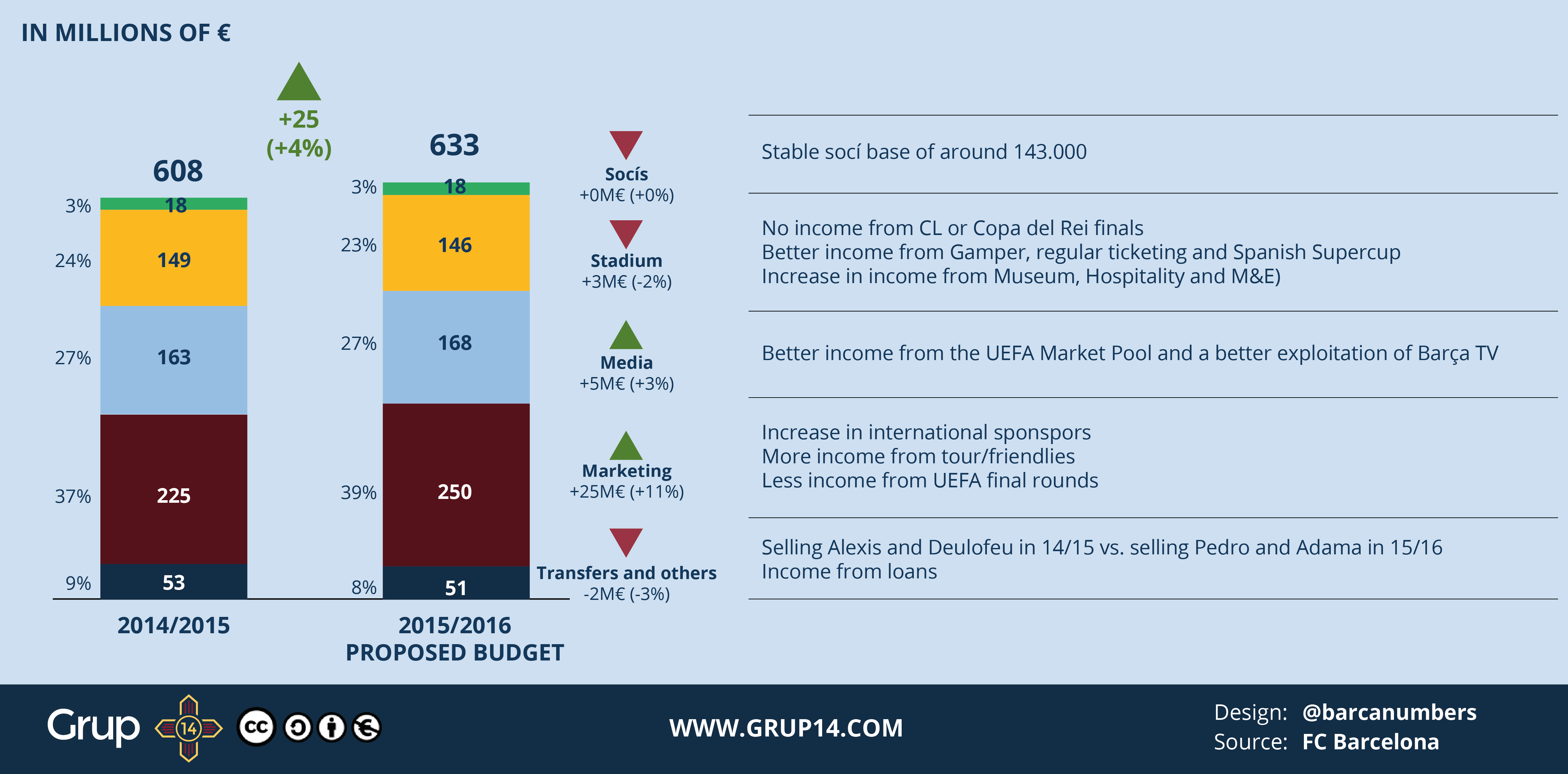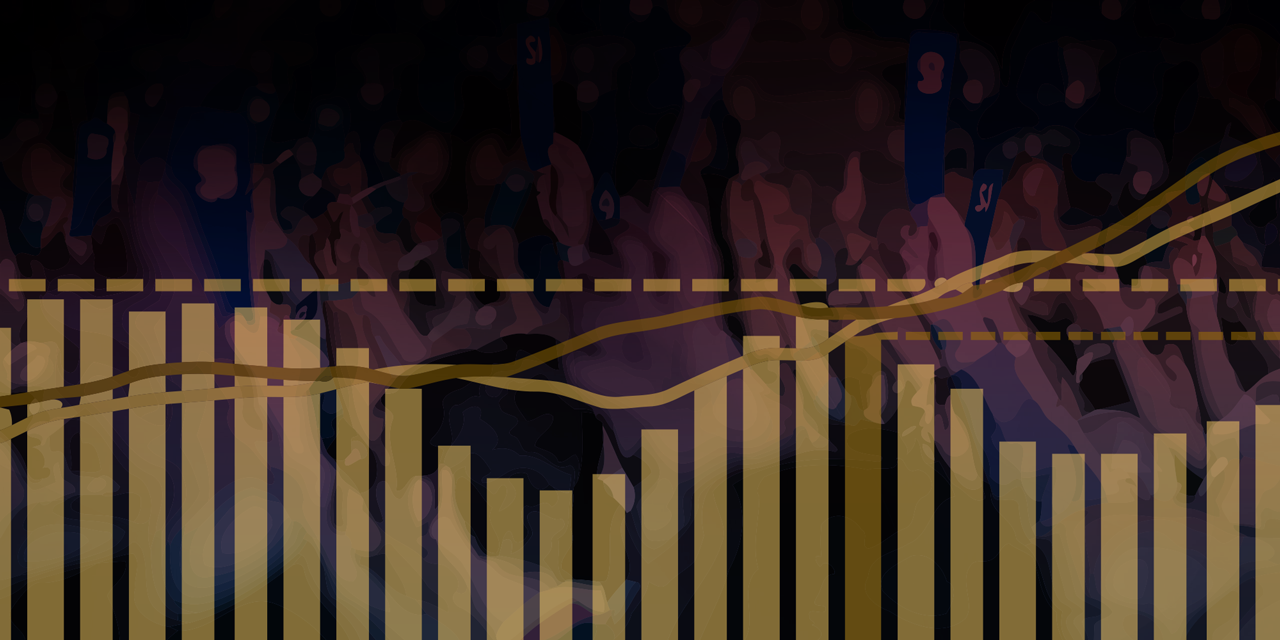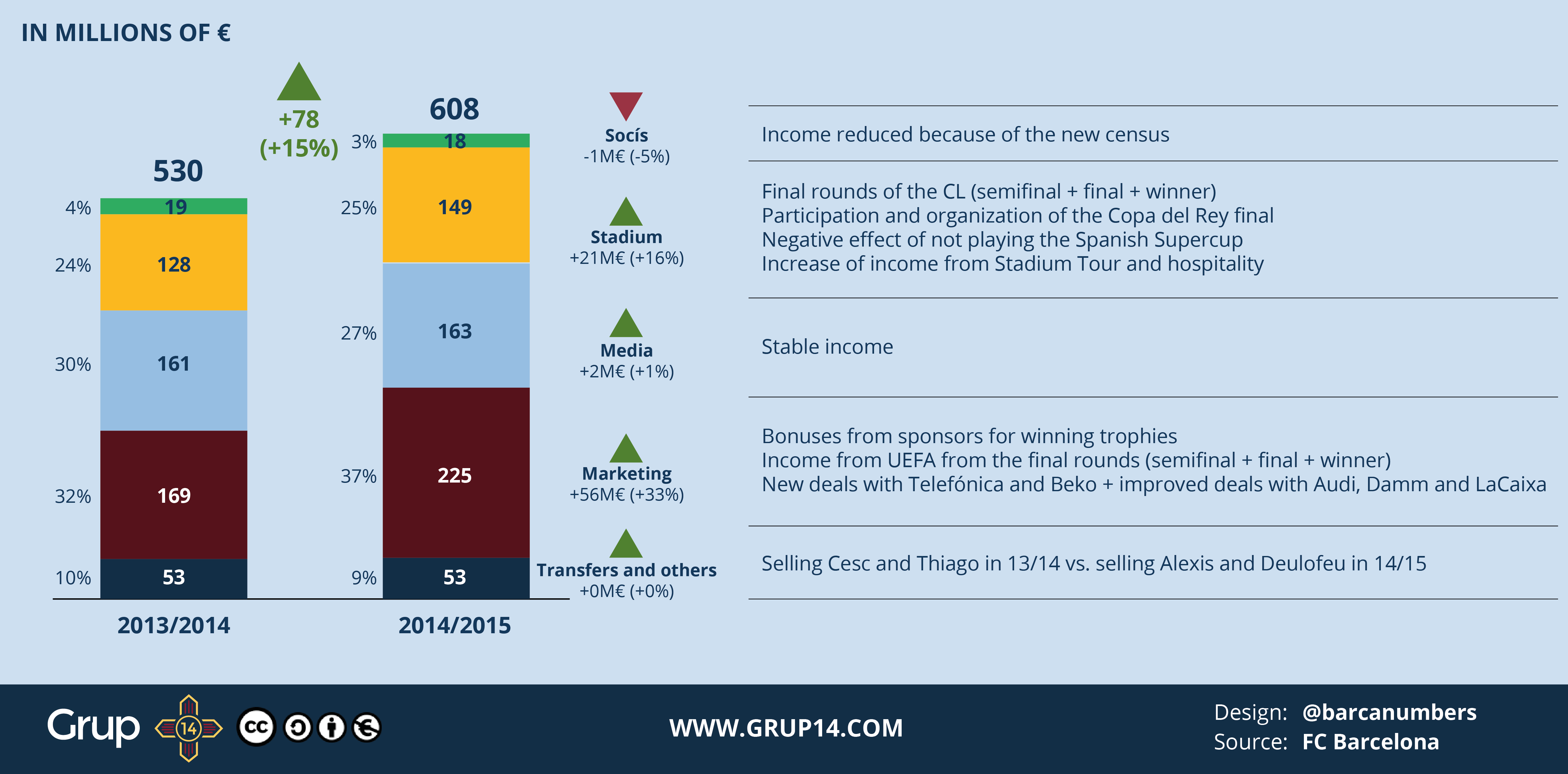analysis | 2015-10-29
Understanding FC Barcelona's financial situation
A lot has been said about the club's financial difficulties, but are they true?
Last week, FC Barcelona’s board presented the club’s full financial report for the 2014/2015 season as well as the proposed budget for 2015/2016 in a press conference and later at the club’s annual General Assembly where they were approved by the socís.
Susana Monje, the club’s economic vice-president, assures that “the economic and financial health of the club is at its best point in history.” That affirmation is sustained by the fact that the club closed the fiscal year with a record income of €608 million and a profit of €15 million. This is the fourth consecutive year in which the club has had a positive balance, total profit over this same period being €128 million.
“The debt is more or less 50% of the income and we have potential for growth,” Monje said. Predictions for next season include hopes for an income of €633 million, with a €20-million profit.
Variation in income between the 2013/2014 and 2014/2015 seasons
Let’s take a look at how the income figures have evolved since the 2013-2014 season. In total, there was a €78-million increase, a lot of which had to do with the club winning three trophies as opposed to none the season before. The marketing income grew by €56 million, mostly from “variable revenues stemming from title bonuses paid out by sponsors for winning the treble, as well as new commercial agreements (Telefónica, Beko) and improved contractual conditions with sponsors such as Audi, Damm and La Caixa,” the club’s report notes.
There was also a significant increase in ticketing revenue, coming from the extra semifinal and final rounds of Champions League, and from the participation and organization of the Copa del Rey final. This offset the negative effect of not playing the Spanish Supercup, which had been part of 2013-2014’s revenue ( tickets for the Spanish Supercup are not included in the season ticket packages, so they’re a separate source of revenue from the regular-season games). There was also a noteworthy increase in the money generated by the club’s Museum and stadium tour.
The Catalan paper Ara had access to a more detailed review of the club’s accounts and has reported several curiosities, like the fact that on March 23rd, 2015 Mediapro paid Barça €13 million, a figure related to a contract signed on June 9th, 2010. As no payment was made before the end of that fiscal year, when reviewing the financial report for 2009-2010 Sandro Rosell’s board made a €3.2 million provision for it, marked as losses for the last year of Joan Laporta’s presidency, thus affecting the reviewed financial report that led to the lawsuit the club filed against Joan Laporta’s board. This allowed Barça to register that €3.2 million as new income this year.
Variation in expenditure between the 2013/2014 and 2014/2015 seasons

Spending grew by 109 million. The fact that costs grew by more than income led to a decrease in the EBITDA (earnings before interest, taxes, depreciation, and amortization) from €134 million to €105 million. Again, the most important part of the increase came from things related to winning the treble. The sporting variables related to this amounted to €53 million. There were also contract renewals and the bonus paid to Xavi at the end of his contract. Diari Ara reports that the figure for this was approximately €10 million, due to the fact that the midfielder had another year left on his deal.
There were other severance packages that were paid last season: Eusebio Sacristán was sacked as coach of Barça B in mid season, the sports management team was fired in January with Andoni Zubizarreta and his two assistants Narcís Julia and Albert Valentin being paid a total of €5.5 million, according to the same report from Ara. The paper also states that the compensation for coaches and players who left the first team (excluding Xavi) cost €4 million.
Management expenditures grew mostly due to non-budgeted expenses associated with participation in the Copa del Rey and Champions League finals, and title celebrations. Spending on legal services also grew from €1.4 million to €1.8 million.
The growth in non-sporting salaries is related to the restructuring of the executive structure, which cost €3 million, and to compensation for members who left the Executive Committee, a sum of €1.5 million according to Diari Ara. The most important departure was that of the general director, Antoni Rossich.
One of the two serious financial problems shown in this report is that the total club expenses from sports-related salaries (football + sections) represent 73% of the club’s income excluding transfers and asset sales (€576 million), surpassing the recommended 70% maximum threshold. Of course, the variable costs were particularly high this season due to sporting success. This figure includes salaries of players and coaching staff, title bonuses, image rights, sports agents, social security and amortization of player contracts. However, if we only consider the football section (first team + youth teams) the ratio is 66%, which is within the recommended levels.
What does amortization mean? For accounting purposes, transfer fees are spread over the length of a player’s contract. If you sign a player for a €50-million transfer fee to a five-year contract, he is amortized by a club in its accounts to the value of €10m per season.
When asked about the club being active in the winter transfer window, Monje said: “the club can afford to sign new players. But we have to be very prudent when doing this because we have a ratio to comply with.”
This brings us to the second financial problem the club has right now. The ratio Monje refers to is the maximum net debt to EBITDA ratio specified in article 67 of the club’s bylaws, which were approved in 2013 at the suggestion of the board. Article 67 states that by the end of the 2017-2018 financial year, this ratio has to be less than 2, with a progressive decrease from the time the statuses were approved until 2018.
The 2014-2015 season had a maximum ratio of 2.75 (which was exceeded). For 2015-2016, it’s 2.5, 2.25 for 2016-2017 and from 2017-2018 onwards it’s 2. The fact that the board failed to meet this ratio (debt was €328 million, EBITDA €105 million) for the previous season means that they now have two seasons to get back to the set ratios or they will have to resign. The club’s forecasted EBITDA for 2015-2016 is €120 million and they expect the debt to go down to €290 million, numbers that would give us a 2.41 ratio, thus meeting the required limit.
“We hope that we’ll even have the debt lower than that,” Monje explained, stating that she wants to reach €280 million.
A transfer made in January would increase the forecast debt (transfer fee) and decrease the EBITDA (salary), which means that there is not much room for maneuver at this moment. For example, if the new player’s salary is €1.5 million that means that the debt can be a maximum of €296.25 million which means that the transfer fee would have to be around €6 million. That means that unless there is an unexpected increase in income (like a signing bonus from the new shirt sponsorship deal or the sale of a player for a significant amount) Barça will most likely not sign anyone until this fiscal year is over on June 30th.
It is important to note that this debt that we’re talking about isn’t entirely bank debt. The club actually only owes €52 million to banks from a syndicate loan that was taken in 2010. This amount was supposed to be paid last season, but due to the increased expenditure with transfers, the club refinanced the loan and will pay it off by the end of this season. €103 million of the club’s debt is to other clubs in deferred payment obligations for player acquisitions (€74 million of that is short term and is meant to be paid by the end of the season and €29 million is long term). For example, the club owes Liverpool €36 million for Luis Suárez this season and another €18 million in long-term debt.
The club also expects that the some of the payments it is owed by other clubs for selling players will be extinguished this season (that whole amount is around €36 million). The only player signing that is listed for the 2015/2016 season is Arda Turan’s. The €34 million owed to Atlético Madrid for him is covered by what Chelsea and Aston Villa owe the club for the transfers of Pedro and Adama Traore.
Even though it was always said that the Espai Barça project will only start if the club’s debt is below €200 million, Susana Monje said that she is not worried about this because by the time the final decision to start the project has to be made in 2017 she trusts that the debt will be within that range.
“We have this season and the next to lower the debt. But this year we will invest €31 million in buying the land of the tennis club (where the new Miniestadi will be built) and for other preliminary works we need to do before we reach the starting point of the project,” she said.
The proposed budget for the 2015/2016 season
The club predicts that the income for the season 2015/2016 will be €633 million. One of the key components of this growth will be the increase in revenue from the participation in the Champions League and the US tour last summer.
Variation in income between the 2014/2015 and 2015/2016 seasons

According to Ara, Barça hopes to get €36 million more from sponsorships this season than the last one. The contracts with Oppo and Lassa Tyres are a step forward for the club, which predicts an increase of the sponsorship contracts by €40 million while there will be a €4-million loss from companies that have finished their contracts with Barça.
Like every season, Barça’s proposed budget only counts on winning the Spanish league, reaching the Champions League quarterfinals and the Copa del Rey semifinals, so these figures don’t include another potential €11 million in title variables. There could also be a €15-million signing bonus for a new contract with Qatar Airways, like the initial deal reached by Javier Faus in June had stated.
Another area that should be highlighted is the exploitation of Barça TV. Telefónica is paying the club €15.6 million for this during the current season and the next three. This means that this season the Spanish company will be paying FC Barcelona a total of €157.2 million: €140 million for the TV rights, €13.3 million for operating in Latin America and €3.9 million for Barça TV.
Variation in expenditure between the 2014/2015 and 2015/2016 seasons

As for the expected expenditures for next season, sporting salaries will decrease by €6 million, but as mentioned before, this just includes potential bonuses for La Liga and the Club World Cup as well as the ones already achieved for the European Supercup, but not another Champions League win. Ara reports that the fixed part of the sporting salaries has increased by €21 million since last season, as the renewals signed during 2014-2015 come into full effect this season. If Barça wins the Champions League again the bonuses paid for this will be an additional €32 million in total.
As currently budgeted, the total club expenses from sports-related salaries (football + sections) would represent 70% of the club’s income excluding transfers and asset sales (€595 million), which would comply with the recommended guidelines. If we limit this to the football section the percentage is 64%.
Asked if winning another treble could make this percentage go over the 70% threshold again, Monje assured that the bonuses paid for this would be covered by the bonuses received from sponsors and the increased revenue from UEFA: “It wouldn’t be a loss for the club, it would even bring a small benefit,” she added.
These numbers also don’t include a potential renewal of Neymar’s contract, even though Monje noted that the effects of an increase in his salary would be neutralized by the fact that his amortization will be lowered because the duration of his contract would be increased.
Another interesting thing that Diari Ara notes about these expenditures is that organizing the elections cost the club €2 million.
So what conclusions can we draw from all of these numbers and graphs and ratios and fancy financial talk? The first one would be that the club is stable and the income keeps growing. However, due to the situations related to the sporting salary to income ratio and the debt to EBITDA ratio it is highly unlikely that there will be any new players until this fiscal year is over unless there is some unexpected income that the club could use for this.
Personally, I would expect signings to be made after July 1st because that would be in the 2016-2017 season, which will bring a new and improved shirt sponsorship contract, which should help alleviate both of these critical situations.
Anything wrong? Send your correction.




 Barcelona News 24/7
Barcelona News 24/7